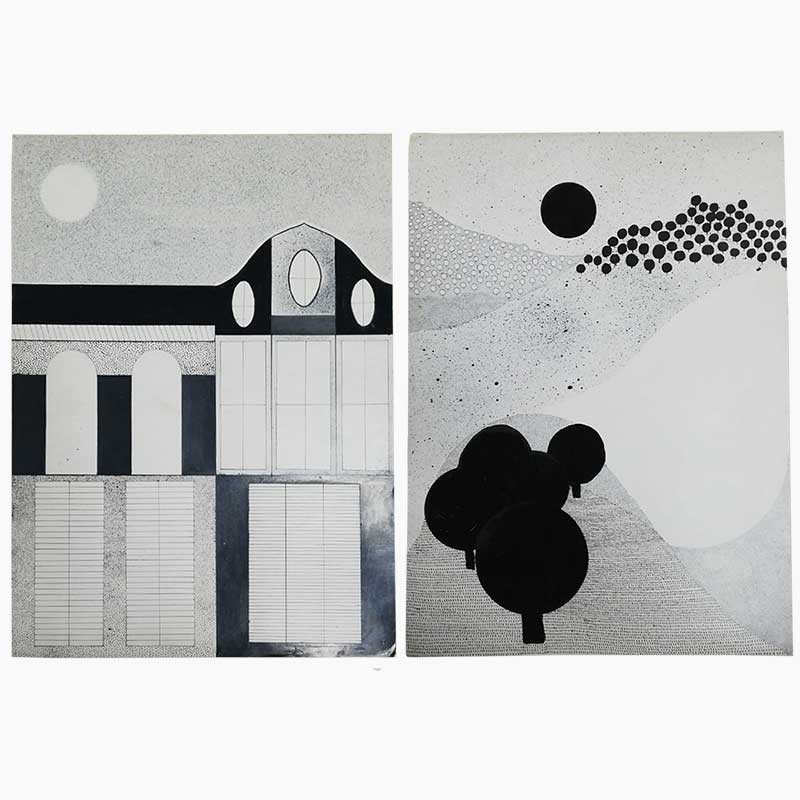
Isa
Originals of 1974 published on Propaganda moderna. Ink and tempera on cardboard, 46.6 x 33.6 cm ea.
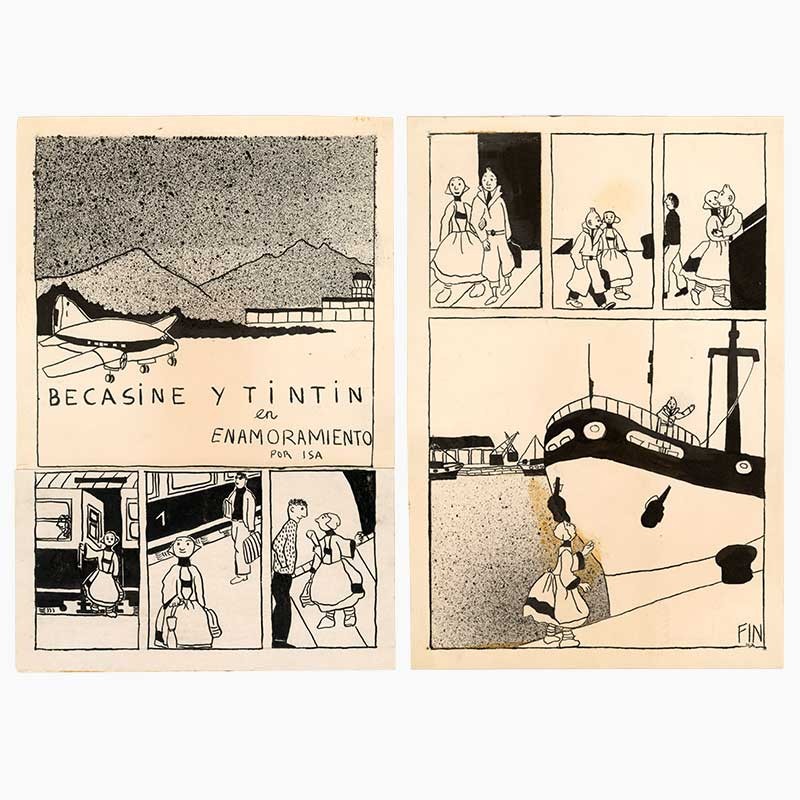
Isa
Becasine y Tintin en Enamoramiento, n.d. [1976-1977?]; published in A la calle, 1977. Ink and collage on cardboard, 26.8 x 18.5 cm ea. [selection]
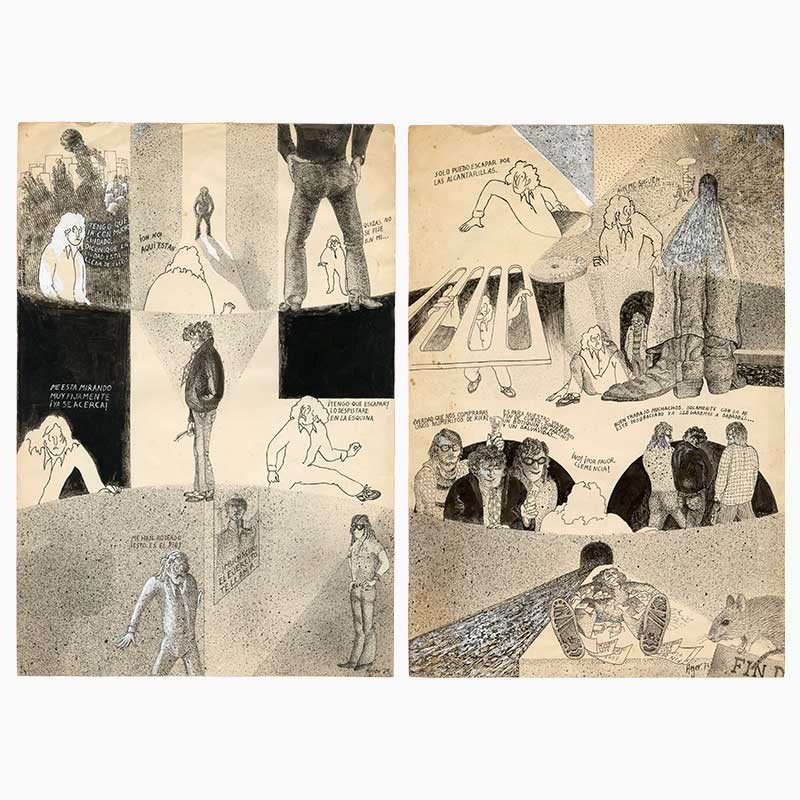
Roger
Original published in El Rrollo Enmascarado, 1973. Ink and white lead on paper, 43 x 29.4 cm ea. [selection]

Roger
L’home dibuixat, 1974; published in Diploma d’Honor. Ink on cardboard, 21 x 30 cm

Roger
Toda la tarde en casa y luego vamos a dar una vuelta, 1975; published in Purita, 1975. Ink on paper, 29.9 x 21.5 cm ea.
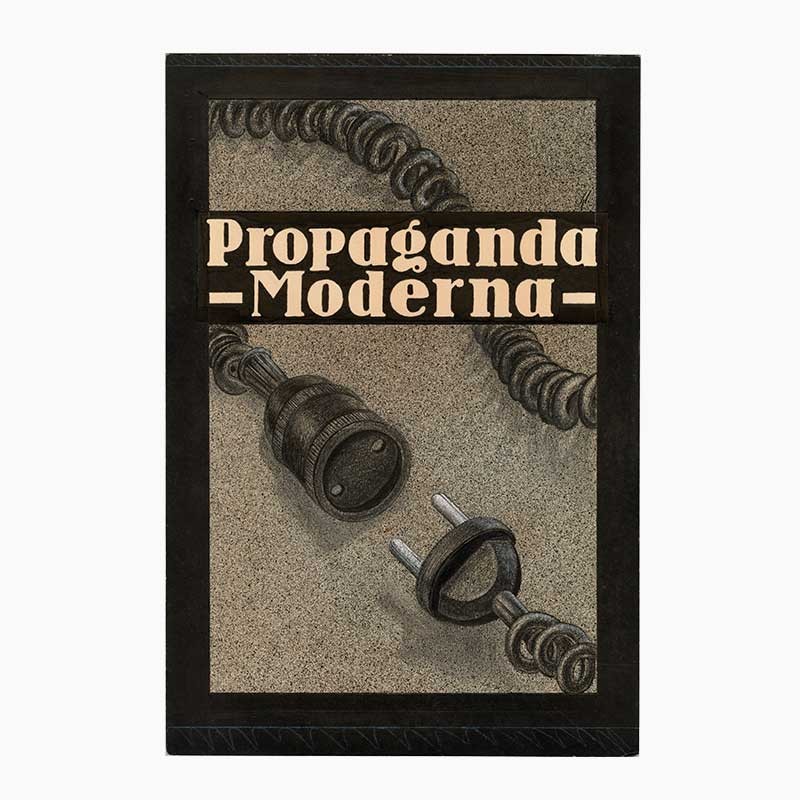
Roger
Cover of Propaganda moderna, n.d. [1977?]. Ink and collage on cardboard, 31.5 x 21.5 cm
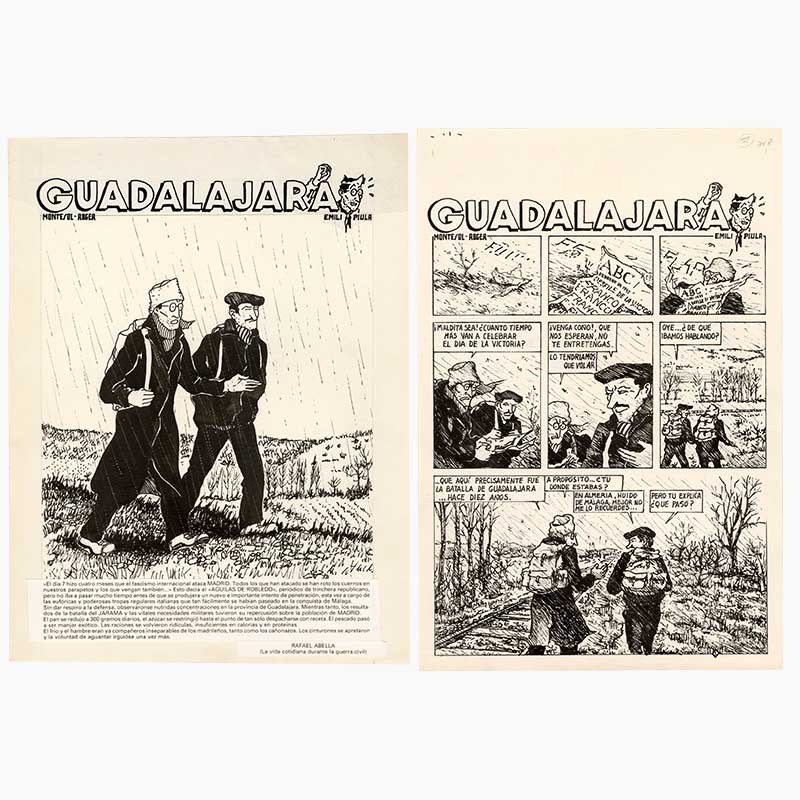
Roger, Montesol
Guadalajara, n.d. [1981?]; published in El Víbora, no. 19, June 1981. Ink, pencil and collage on cardboard, several measurements [selection]

Grupo El Rrollo
Pauperrimus Comix, s.l. [Barcelona?]: s.n. [Nueva Dimensión?], n.d. [1974?]
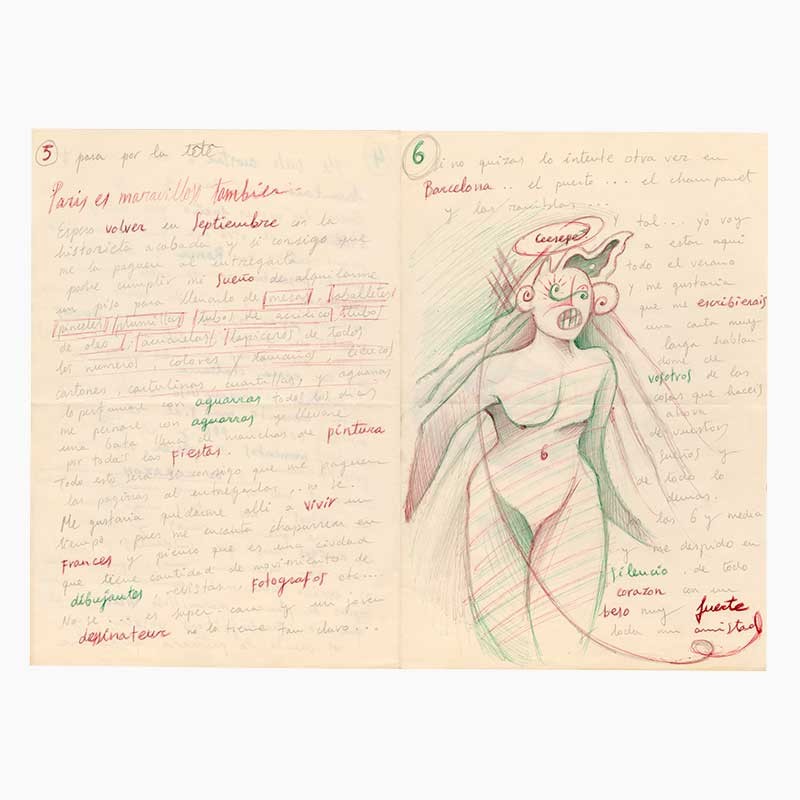
Letter from Ceesepe to Roger and Isa, 9 June 1981 [detail]

Letter from Miguel Farriol to Isa, 19 January 1979 [detail]
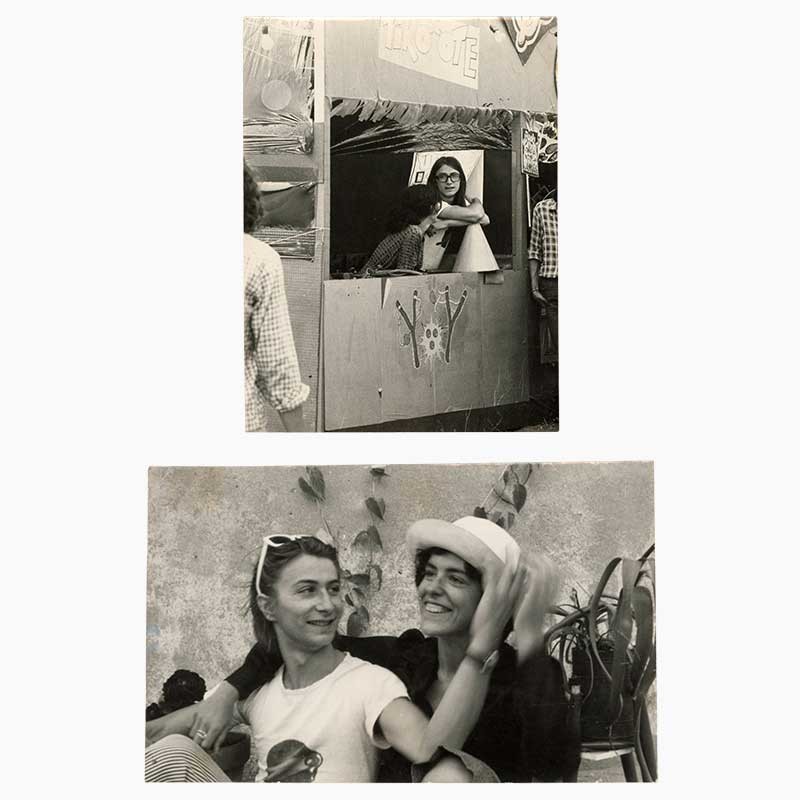
Roger and Isa, 1975-1977
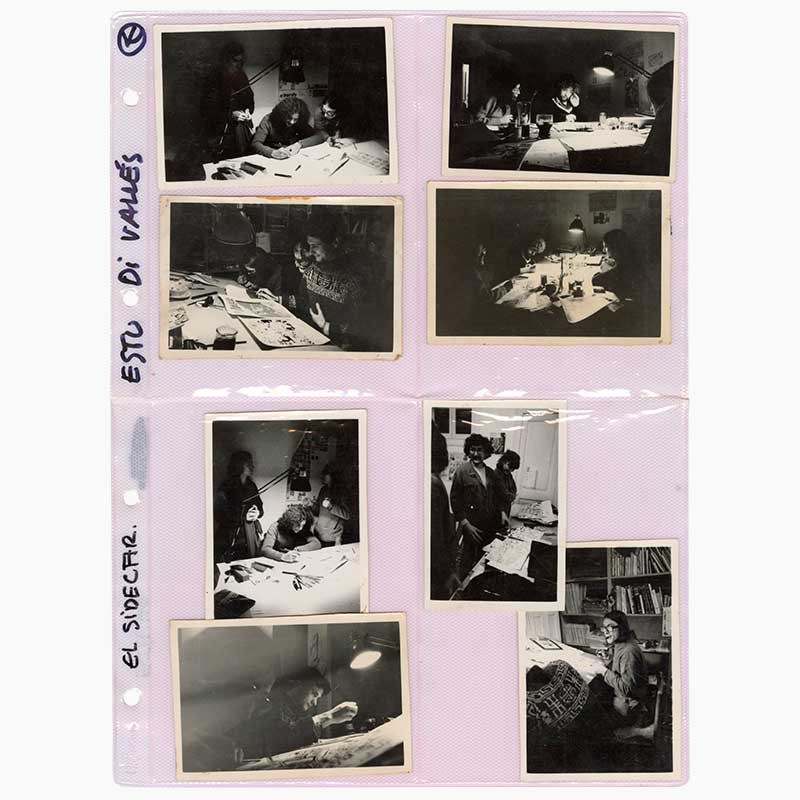
Preparing El Sidecar, n.d. [c. 1977]
1,800 originals, publications and documents.
Roger Subirachs i Burgaya (Barcelona, 1956–San Clemente de Llobregat, 2017) —who signed his work as Roger— was a key strip cartoonist in the evolution of Spanish comics in the seventies and eighties, participating in Barcelona’s underground movement in the seventies. The son of the sculptor Josep Maria Subirachs, Roger joined the artist collective El Rrollo Enmascarado, creating comics and comic strips in publications such as Pauperrimux Comix, Catalina, De Quommic, Diploma d’honor and Purita, together with the woman he would end up marrying, the cartoonist María Luisa Barraquer (Barcelona, 1956), better known in the art world by the name Isa Feu.
As a member of the group El Rrollo Enmascarado, he contributedfrom the outset to the magazine El Víbora, in which he published series such as Vaselín y Loto and Camarada Emili Piula. He was also a part of the founding editorial team of Cairo, another important magazine in the evolution of Spanish comics, which called for new aesthetics based on the so-called Ligne claire style.
In the late eighties, the comic world in Spain underwent a profound publishing crisis, which led to Roger working in other creative fields such as film and television, where he worked as an art director, set designer and a designer for films (Juana la Loca, Carmen, Tirant Lo Blanc) and series (Makinavaja and Pepe Carvalho).
In the comic and cartoon world, together with Isa Feu —also a member of El Rrollo Enmascarado and one of the first collaborators of El Víbora— he drew comic strips with a groundbreaking and alternative style, in which sex played a fundamental role, such as in the series Corazón Loco. Isa Feu abandoned the comic world relatively early and refocused her work on painting and illustration.
Comprised of over 1,800 items, Archivo Lafuente’s Roger and Isa collection includes magazines, books, leaflets, comics, invitations, cards, handwritten scripts and, chiefly, original comic strips and drawings made in the seventies by both artists.